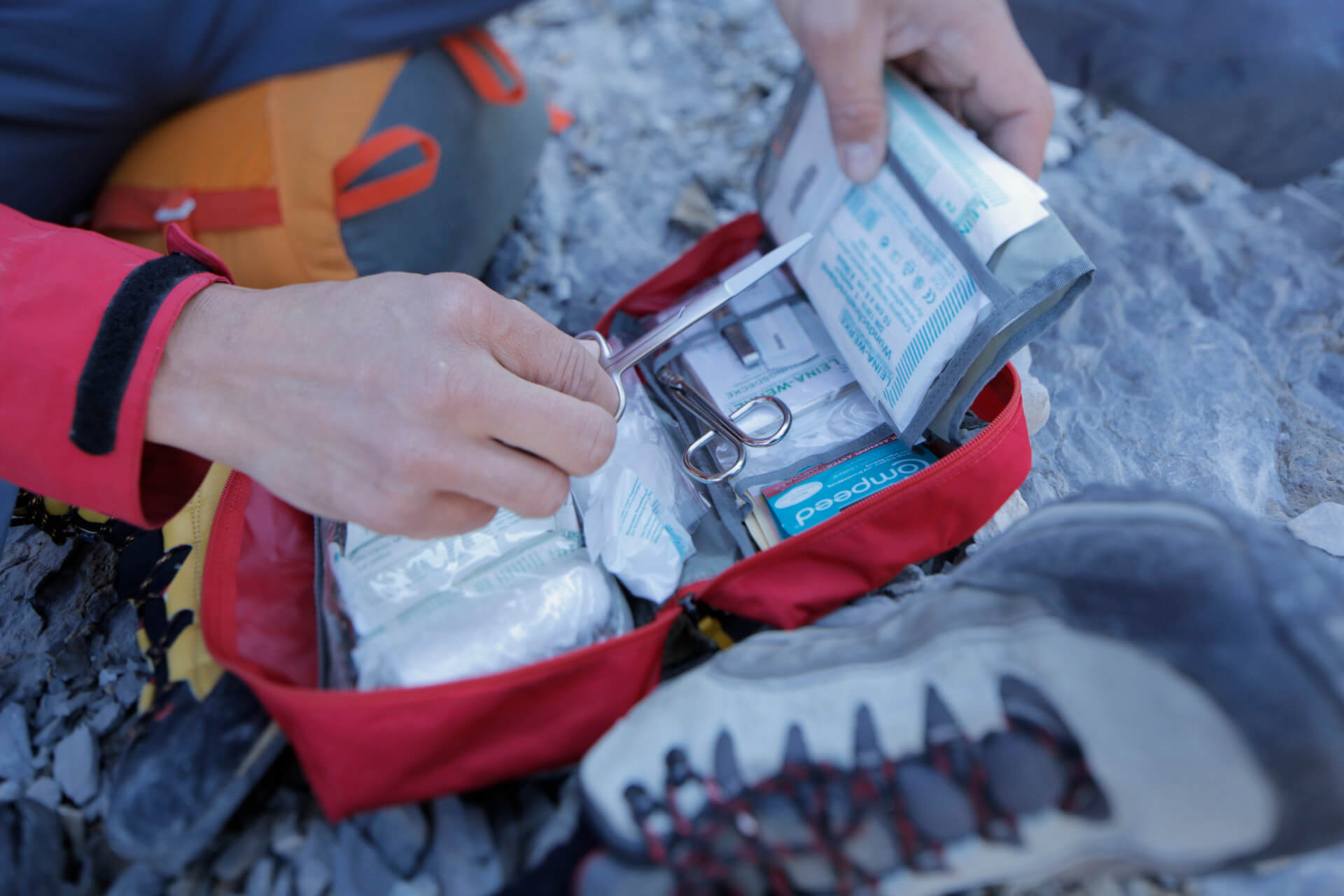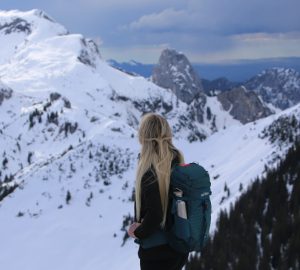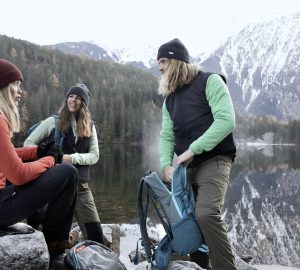Tips and tricks for first aid in the mountains and in the wild cannot be a substitute for a first-aid course designed especially for the requirements of first medical care outdoors but do give an overview of the simple measures that can be taken to help an injured person in an emergency. Tatonka shows you how the most common problems can be avoided and treated if necessary.
Proper treatment of bleeding wounds
Painful blisters, grazes and cuts on arms and legs do not represent an immediate risk but can thoroughly spoil a trip for the person affected; what is more, damage to the outer skin layer increases the risk of an infection which can lead to anything from inflammation to blood poisoning. Knowing how to treat such injuries is of major significance during a trip but also at home, in the office or in the city.
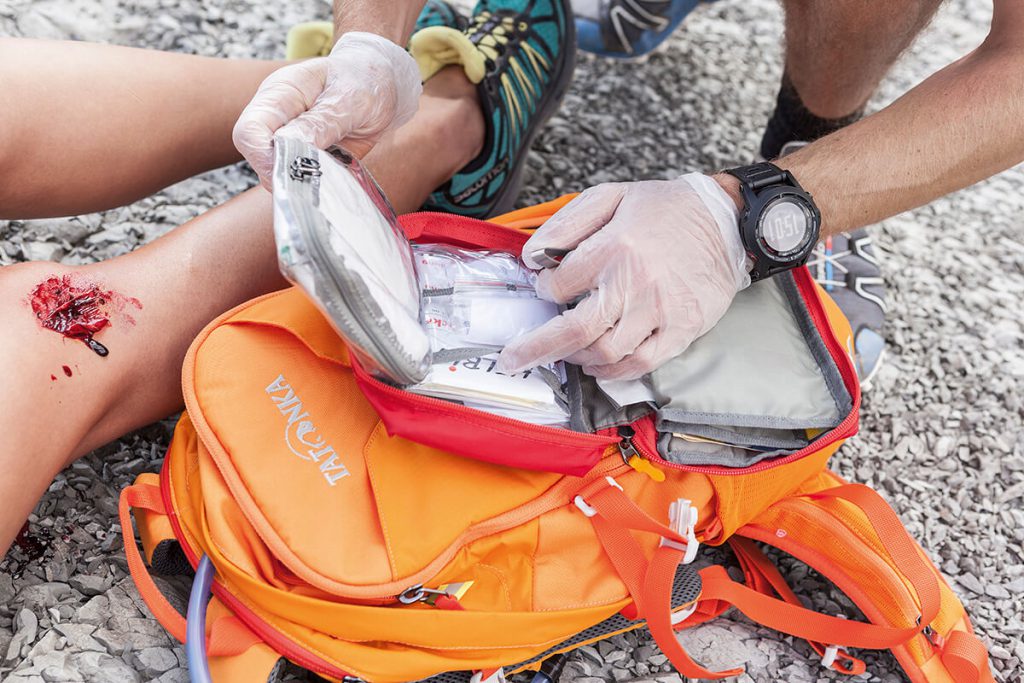
The first aider should, of course, always wear disposal gloves when treating a wound, to protect both the injured person and himself from infection. If a wound is bleeding, the limb should be held up to stem the loss of blood. If the wound is very dirty, it should be rinsed with plenty of clean cold water. Small foreign bodies, such as little stones or thorns, can be removed with a pair of tweezers but larger items should always be left where they are and possibly cut off just above the wound.
Remember: Larger items should always be left where they are and possibly cut off just above the wound!
Then the wound must be treated with an antiseptic and the surrounding area cleaned, with alcohol pads, for example. And remember to always wipe away from the wound and not towards it, otherwise there is an increased risk of infection. Small wounds, such as cuts or scratches, can be covered with a plaster; for the treatment of larger wounds, a first-aid dressing, with a sterile compress directly affixed to an elastic bandage, is ideal. The bandage is intended to stop bleeding and prevent any germs for penetrating the wound
Cool, bandage, rest – the right care for stressed and damaged joints
If joints are sprained or overextended, they often become swollen, painful during movement and may also develop haematoma. If possible, the injured limb should be rested; depending on the severity of the injury, a short rest may be enough but sometimes the patient has to be transported home. Cooling poultices, using water, ice or snow, may help swelling and pain but you must make sure that the patient’s skin is not damaged. If skin is not injured, a sports or arnica gel can be applied to combat swelling and haematoma. The damaged joint should always be firmly bandaged
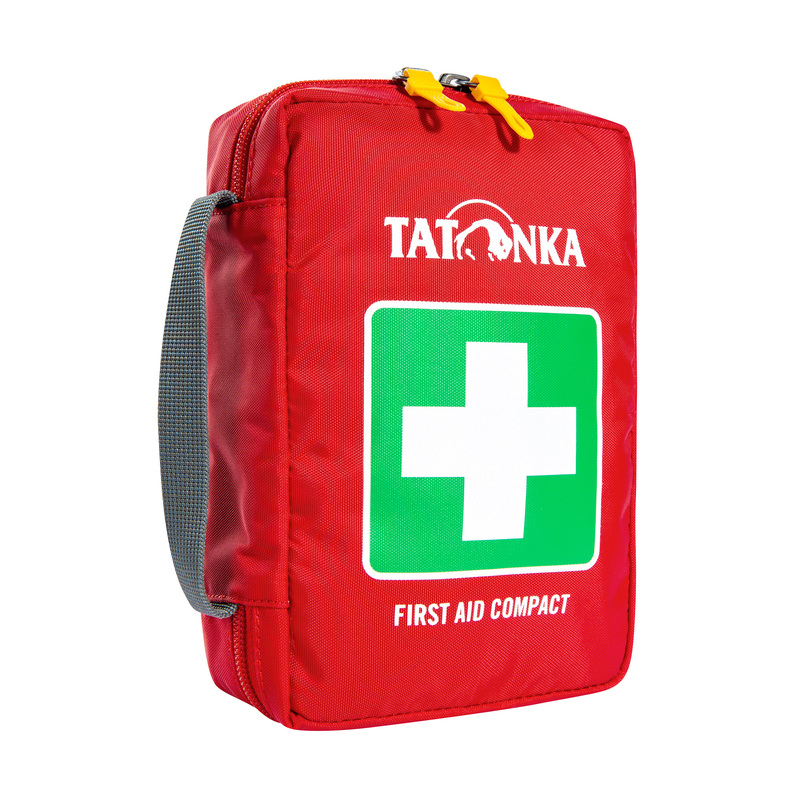
Regardless of whether for day hikes or multi-day trekking tours.
Blisters and pressure marks – painful irritants
Blisters can spoil even the best trip – new shoes, socks that don’t fit properly, hikes that are too long or hot weather can cause annoying and painful blisters on toes, heels and the front of the shin. Here it is very important to take the necessary precautions so that you can enjoy the beauty of Nature without pain and problems.
Before you set off, you should protect the critical areas with deer tallow, medical foot cream or blister plasters. Together with comfortable, well-fitting hiking boots that have already been broken in, special hiking socks ensure a good environment for your feet and offer protection from pressure and rubbing. Remember to lace your boots firmly so that your feet don’t slip around in them.
Tip: The blister skin should not be removed but left as protection until the wound has dried out.
If, despite all precautions and preparations, the first signs of a blister develop, such as the beginnings of pain and a slight reddening, strips of tape or a blister plaster should be adhered to the place in question. This can prevent the blister getting worse if it is still very small.
If blisters are already very large and painful, relief can be obtained if they are carefully opened with a sterile disposable scalpel or a sterile hollow needle, the blister fluid pressed out completely and the sensitive wound treated. To do this, first treat the blister and surrounding areas generously with an antiseptic and carefully prick with a disposable scalpel or hollow needle without injuring the flesh underneath the blister. Then press out the blister fluid and disinfect the wound again.
The blister skin should not be removed but left as protection until the wound has dried out. An ordinary plaster, a blister plaster or a germ-free crease-free bandage will protect the wound from infection and renewed irritation.




